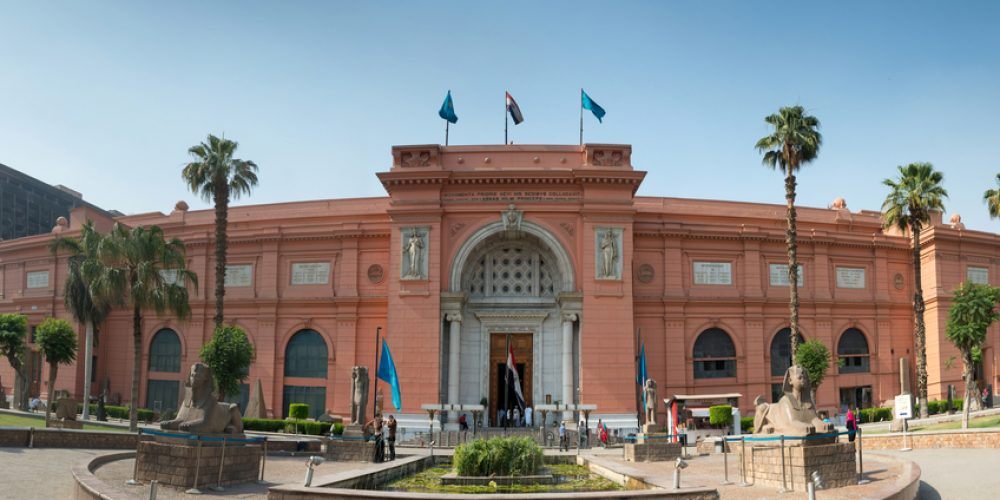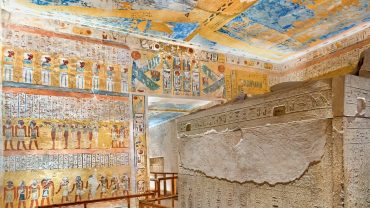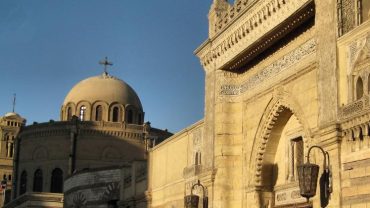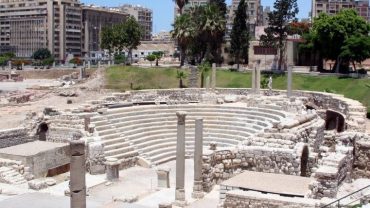Egyptian Museum in Cairo Egypt | Facts, Tickets, Plan,
Discover Famous Pharaonic Antiquities, Monuments in Cairo Museum, opening hours, entrance fees Prices and more.
Egyptian Museum History
The Egyptian Museum in Cairo is one of the largest and most famous museums in the world. The Cairo Museum or EMC was the first national museum of antiquities in the middle east and it has a unique collection of Egyptian antiquities.
Cairo Museum has a long story behind its building and the present location in Tahrir Square was the 5th place for the Museum. In the first beginning, the museum was called the museum of Egyptian antiquities as it houses pieces from antiquity.
Tombs rubbery was known in Egypt since antiquity and we have many mentions about that since the beginning of the Egyptian history when people rubbed the Pyramids and the tombs of the Valley of the Kings.
In modern times, people especially foreigners had the same passion to take the Egyptian artifacts abroad. When Mohamed Ali Pacha (1805-1848) noticed the acquisition and smuggling of the visitors to Egypt, he issued a decree to reduce and stop that. Mohamed Ali’s decree was about to ban any further excavation of antiquities except with permission and prevented their exit from Egypt.
Champollion was one of the reasons behind Mohamed Ali Pacha decree because he came to Egypt in 1828, willing to excavate and study antiquities.
Mohamed Ali appreciated his intention and gave him the necessary protection and facilities. Champollion went from one site to another, discovered fifty sites in nineteen months, and documented the results of this journey in six large volumes under the title “The Magnificence of Egypt and Nubia”.
Mohamed Ali in 1835 issued a decree to build a house for Egyptian antiquities in the house of al-Daftrdar near the Azbakiya. Moreover, he ordered to transfer of all the discovered antiquities to Azbakia Museum. However, the Azbakiya Museum did not last for a long time. The collection was in the Citadel since 1850.
The New Museum at the citadel was opened only for private visits. Unfortunately, during the visit of Austrian Crown Prince Maximilian in 1845 to the citadel Museum, he expressed his admiration for the collection to Abbas I, Egyptian Khedive at that time, he was offered the whole collection as a gift.
September 1850, Auguste Mariette came to Egypt and visited many places like the antiquities of Giza and Saqqara. Mariette succeeded to convert the building of the river navigation company at the port of Bulaq into a storage place. He put all the artifacts in four rooms in that building.
In 1859, when he discovered the antiquities of the Queen (Iah-Hotep) Dera Abu el-naga, he thought seriously that it is time for a bigger museum. On October 18, 1863, during the reign of Ismail Pacha, he converted Bulaq stores into museums.
In 1878, a very high Nile flood destroyed the Museum of Bulaq and they did their best to save and store the antiquities. At that time, started the idea of establishing a new museum to collect and save whatever they had and will discover later.
In 1889, they started the transferring of all antiquities to Saray (Palace) Ismail Pasha in Giza under the supervision of Grebo director of the Department of Antiquities. Since then, the Egyptian government decided to construct a new Museum.
In 1895, An international competition for the best design for the construction of the new museum was launched and the location was selected in Tahrir Square, Ismailia Square before. Of about 73 designs, Marcel Dornion’s design was selected for the new building of the Egyptian Museum.
The Museum was built in a neo-classical design and the cornerstone was laid on April 1, 1897, by the Khedive ‘Abbas Hilmi II. The official inauguration was on November 15, 1902. The Cairo Museum had 107 halls and over 160 000 pieces.

Division of the Egyptian Museum
The Egyptian Museum has 5 different areas.
The basement of the Museum
Below the ground floor, there is the basement, the museum’s main storage room for major antiquities uncovered during archaeological excavations contains tens of thousands of artifacts from various archaeological periods and areas.
Ground floor
The ground floor of the Egyptian Museum has an exhibition area of 5,400 square meters set aside for the chronological display of Egyptian antiquities.
First floor
The first floor is covering 3,500 square meters and it is dedicated to the treasures of King Tutankhamun, The treasures of Yuya and Thuya, animals’ mummies, wooden sarcophagi, and typological collections such as papyri, ostraca, and coffins. One of the best collections is also on the first floor Fayoum Portraits and Fayoum Mummies.
Second floor
A second floor is a storage place also. Collections of sarcophagi from different eras are here for scholars.
Atrium
The atrium is that section of the Cairo Museum facing the entrance now on the ground floor approximately 45×16 square meters and it is lower than the rest of the ground floor.
The antiquities in this place have been made to resemble ancient Egyptian temples consisting of large portals and statues, such as those of Amenhotep III and his wife Ty.
The Atrium also has the floor of Akhnaton Palace found in Tell El Amarna. Like the hypostyle halls of the temples, the Atrium contains a gabled ceiling covered by glass panels, allowing for some of the soft light needed to create the awe-inspiring atmosphere of ancient Egyptian temples.
The Garden
In the garden adjacent to the present exit now, is a memorial monument to Auguste Mariette surrounded by 24 busts of his assistances plus a bronze statue of him.
How to visit Cairo Museum?
Let’s say you reached the Egyptian Museum by Car, taxi, or walk from a near hotel at Tahrir Square. You suppose to enter the museum through a big gate followed by one of two security checkpoints you will pass till you will be inside the Museum.
Kindly be sure that you do not have anything metal like spoons, Swiss knives, nail clippers, and normal knives. Direct to the left-hand side, you will find the ticket booth. Stand in the queue and get your ticket and if you have a student card (ISIC Card only) you can get a 50% discount. Camera ticket from the same window (3$) but Mobil phones are free.
Egyptian Museum Garden
It is time now to start your unforgettable time in one of the biggest and most famous museums in the world. The Egyptian Museum in Cairo has an extensive collection of ancient Egyptian artifacts starting from the garden of the museum. If you look around you in the garden, you will a lot of authentic pieces like Sphinx statues, busts of statues, and stone statues of the baboons. In the garden also, you will see an amazing fountain with the symbols of upper and lower Egypt, the Lotus flower, and the Papyrus plant. Enjoy the blue lotus or Lilly.
Kindly note that if you are alone and you need to have an audio guide (not advised), you can hire a guide to explain the Museum. Normally beside the ticket booths.
Egyptian Museum Ground floor
Now it is time to face the entrance of the Museum and pass through the second security gate after you will show the entrance ticket. Once you are inside the Museum after the security gate, you will see in the four corners, four huge granite statues of King Ramesses II.
Then facing you on the wall to the right-hand side beside the elevator, the famous Rosetta Stone. Rosetta Stone is one of the masterpieces of the Egyptian Museum and the only replica as long as the original in the British Museum.
The Rosetta stone is the reason behind what we call Modern Egyptology. Now you have two options, going to the right side or going to the left-hand side. As long as the antiquities in the Museum follow the chronological order from the Old Kingdom, Middle Kingdom, New Kingdom, Late Period, and Graeco-Roman Period.
Before you start your tour to the left side of the checkpoint, you can go straight to the Atrium and on the way, you will see the famous Narmer Palette, the oldest piece that explains how upper and lower Egypt was united by the king Narmer.
Walk a bit to the front and direct in front of you, you will see the biggest colossal statutes in the Museum, bigger than the entrance Amenhotep III and his wife Ty (Tiye) together with 3 daughters.
Then you will see the floor of the palace of King Akhnaton decorated with lotus, papyrus, fish, and birds. One of the masterpieces here also is the Pyramidion of the black Pyramid of Amenemhat III at Dahshur. Amenemhat III was the sixth pharaoh of the Twelfth Dynasty of Egypt.
Back to start your tour just to the left of the checkpoint, you will pass the famous statue of the founder of the Third Dynasty of Egypt, King Djoser.
This first life-size limestone statue exists in the Serdab in Saqqara beside the step Pyramid. Walk through the corridor, you will see the groups of statutes Mycerinus, the Wooden Panels of Hesy-Ra, government official, physician, and scribe who lived in the Third Dynasty of Egypt.
At the end of the first corridor, turn right you will see the statue of the Scribe then you will find many rooms in rows, and please check them one after one.
In one room, you will see the statue of Rahoteb and his beautiful wife Nofret, in the same room, you will see the treasures of Queen Hetepheres, the mother of Cheops. Also, here you will see the only statue of the builder of the great Pyramid king Cheops or Khufu from ivory.
In another room, you will see the masterpiece of the Egyptian Museum, Khafre/ Chephren the builder of the second pyramid made out of diorite, the second hardest stone in the world.
Mid corridor there are the middle kingdom artifacts like the famous statue of the pharaoh Mentuhotep (Neb Hebt Ra), some sphinxes of Amenemhet III, and other statues of 12th Dynasty kings.
Then you will reach the New Kingdom part starting with Queen Hatshepsut’s head from her temple El Deir Al Bahari in Luxor. Also, there is a statue for her like Sphinx and one huge kneeling one, and a beautiful seated statue for the war goddess Sekhmet.
Turn right, opposite the exit, walk a short alley, and admire some beautiful canopic jars until you reach the Amarna Period room on the left-hand side. Here are a lot of Amarna period artifacts like statutes for Akhnaton, Nefertiti, their daughters, and the Akhnaton sarcophagus. Walk till the end of the corridor ending with some sarcophagi and Ramesses statue-like child and turn right again to check all the Greco-Roman corridor.
At the end of that corridor, turn right again through the mummification bed, and sarcophagi to the checkpoint where you started.
Egyptian Museum First Floor
The first floor of the Egyptian Museum is much easier than the ground one, not that crowded, not that hot, and has a lot to see and admire.
You can reach the first floor from the right or left corner after the entrance. Now on the first floor, you can enjoy Tutankhamun’s treasures like his Golden Mask, The golden Sarcophagus, The wooden gilded sarcophagus, and some more pieces like the canopic jars and wooden gilded Naos.
You can also enjoy the treasures of Yuya and Thuya including the mummies and sarcophagi. Beds and sandals, alabaster jars, and papyrus. Here also you can enjoy the animals’ mummies room and the beautiful sarcophagus of Queen Kawit, the wife of King Nebhepetre Mentuhotep. Meanwhile, there are some mummies of humans including poor men, rich men, princesses, Jewellery, and much more.
Egyptian Museum Exit
Go down through any staircases and direct after the exit, there is a book shop and souvenirs shops, have a quick look before you say goodbye to the Cairo Museum.
Notes:
Egyptian Museum opening hours
Daily: 9am-5pm
Egyptian Museum entrance fees
200 EGP (11 USD)
50 EGP Camera ticket (3 USD)







Comment (0)